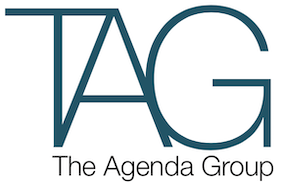The following sentence will likely be the least interesting sentence you will read today. The Victorian Treasurer on 5 March 2012 released the Government’s response to the “Inquiry into Victoria’s Regulatory Framework” conducted by the Victorian Competition and Efficiency Commission (VCEC). But as boring as it sounds, it is important for business in Victoria.
The inquiry commenced in June 2010 and VCEC delivered its report to the Treasurer in April 2011; eleven months later, the Treasurer has provided his response.
The Victorian Government has committed to reducing “red tape” by 25% by July 2014. Ignoring for the moment how such a reduction can be measured, a cut of this magnitude is significant and will not be easy for regulators and Governments to deliver – particularly when the Treasurer also states that “the regulatory environment must also ensure that community interests are protected”.
Nevertheless, the VCEC report and the Treasurer’s response provide guidance on where some of this activity might be found. The VCEC report made 42 recommendations covering seven distinct areas of which five could be described as being part of the regulatory cycle:
- Improving the regulatory management system
- Optimizing impact assessments
- Achieving consistency in implementation
- Striving for excellence in administration and enforcement
- Embedding evaluation and review
The other two areas are the motherhood statement of “reducing regulatory burden” and consideration of how best to deliver State-based regulation in a federal system.
Of the 42 recommendations, the Treasurer’s published response indicates that the Government supports 15 in full; 20 in part; four are to be considered following further review and three are not supported at all.
In summary and not surprisingly, the Government has indicated it wants to improve stakeholder consultation by commencing discussions sooner in the process; to start with the default position that non-regulatory options should be adopted if at all possible to achieve policy objectives; to pursue administration of regulation which minimises administrative and compliance costs; and to promote evaluation and continuous improvement as key components of any regulatory activity.
While all the above sounds encouraging, until implementation occurs, it’s difficult to provide specific advice on the implication of the VCEC review and the Government’s response. What we do know is that the Government considers this review to be just part of a process of reform, which will also be informed by the report of the Independent Review of State Finances (which was due to provide its final report in February 2012) and facilitated by further revisions to the Victorian Guide to Regulation which was most recently revised in August 2011.
Until then, we must wait to see how each of the proposed reforms will be implemented. Some would appear to be relatively easy for a Government to mandate – such as Ministers issuing a Statement of Expectations for each regulator that includes an explicit requirement that regulators establish and publish timelines for regulatory approval processes. On the other hand, the proposal that the Department of Treasury and Finance identify specific areas in which market-based instruments may be appropriate, and work with relevant departments to investigate, develop, test and implement market based solutions, while sounding noble, also appears to be complex, time consuming and not to put too fine a point on it, problematic.
All in all, the VCEC and the Treasurer’s response progress regulatory reform in a philosophical way. Implementation, however, is where the chance exists for real benefits to accrue.
